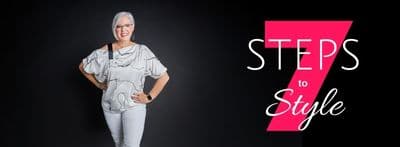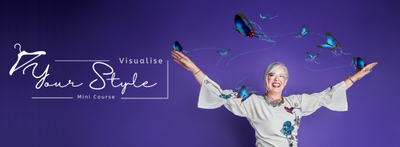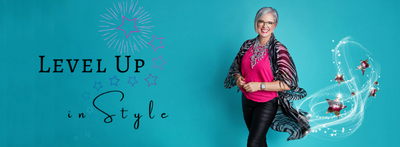The Australian government recently received a body image report that advises on all manner of aspects to help build a better body image.
The report encourages advertisers, the media and the fashion industry to promote more positive body image messages.
The report includes a Voluntary Industry Code of Conduct on Body Image (see below) which recommends using healthy weight models, realistic and natural images of people and disclosure when images of people have been digitally manipulated.
Also, Mia Freedman who was the chair of the advisory body was today on ABC radio’s Life Matters program talking about the report – you can listen to the interview here
Mia used to be the Editor of Australian Cosmpolitan Magazine and worked hard at including all sorts of body shapes and sizes into the editorial content of the magazine when she was in the position. Listen to what she says about the experience on the interview.
Here is what is proposed:
VOLUNTARY INDUSTRY CODE OF CONDUCT ON BODY IMAGE
Organisations that sign up to this Code of Conduct will abide by the following principles:
Positive content and messaging
Use positive content and messaging to support the development of a positive body image and realistic and healthy physical goals and aspirations among consumers.
Diversity
Use a diverse range of people that are appropriate to their target audience. When considering diversity, particular focus should be given to including a range of body shapes, sizes and ethnicities.
Fair placement
Use advertising that supports positive and healthy body image behaviour.
Advertising that contradicts positive body image messages will not be used.
Realistic and natural images of people
Should not use digital technology in a way that alters images of people so that their body shape and features are unrealistic or unattainable through healthy practices.
Make consumers aware of the extent to which images of people have been manipulated.
Healthy weight models
Use models that are clearly of a healthy weight.
Appropriate modelling age
Only use people aged 16 years or older to model adult clothes or to work or model in fashion shows targeting an adult audience.
Fashion retailers supporting positive body image
Stock a wide variety of sizes that reflects demand from customers.
———————–
Sarah Murdoch, who was on the advisory group, appeared with out any airbrushing on the cover of this month’s Australian Women’s Weekly magazine
I think this is a fabulous step in the right direction in tackling this problem – what do you think?














I think (based on your excerpt) that this is mostly an excellent idea; however, the use of the word "healthy" in the recommendations is triggering some red flags for me. I am inferring that the report uses "healthy" to mean not super thin or "underweight." I sincerely hope that in the push to encourage more body diversity in the fashion world that we don't exchange fat-phobia for thin-phobia. I would like to see some discussion on how the fashion industry (and for that matter, the entertainment industry)also does a disservice to naturally thin women. For example, many thin women who have small breasts (which are proportional to their frame size) feel picked-apart by the plethora of images of thin women with disproportionally large breasts.
All in all, I think this is a fantastic step in the right direction. I would just hate to see the pendulum swing too far.
Courtney – there was mention that it wasn't about 'thin bashing' that all women of all shapes, colours and sizes should be represented as this is normal in teh population. The healthy word is used in the correct sense.
Seems balanced and fair. I'll be curious to see how influential the code becomes.
I think on the surface its definitely a step in the right direction. But it also reminds me that when the health codes became effective in Europe for requiring certain BMI for models a couple years ago, one designer (don't remember who) decided to use super skinny models anyway and in addition found the biggest model he could as a great big middle finger to the codes.
So, I'm hoping it works a positive, but I'm sure someone will use this opportunity to say something ridiculous like that women with curves aren't healthy either because they're fat.
http://lawschoolfashionista.blogspot.com/
Maybe advertisers could be required to use photos of really ugly people- so we could all feel beautiful in comparison. (Sarcasm intended.)
I am all for diversity, and savvy advertisers where I live- the most diverse city on Earth- do so.
Other than the age requirement (which I would invoke for cosmetics) I am not in favour of legislating what body size people see in ads. I prefer consumer action like boycotts, letters and "Feed Me" stickers on billboards.
I am reminded of Eleanor Roosevelt's comment that "no one can make you feel inferior without your consent".
I agree with Duchesse on this. Consumers have the power to drive change. The gov't recommendations are fine, but how people spend their money has the biggest impact.
Duchesse – interestingly Mia mentions in her interview that when she did use models of all shapes and sizes, the circulation of her magazine went up (there's some voting with the hip pocket), and the advertisers were happy – it was the photographers, designers and fahion editors who were unhappy with the situation and did not support it.
That is insanely awesome! I especially like the one about using age appropriate models. It's like when you see a wrinkle advertisement and the model is all of 15- NO ONE has wrinkles wher their 15!
Yep, sounds good. We shall see how it works out.
Of course, they started off with a conventionally-attractive, able-bodied, white, tall, thin blonde, and allowed her to show her tiny eye wrinkles. So as steps go it's pretty small.
But they are saying the right things, at least. They just really have to back it up with actions.
I see it as a kind sign.